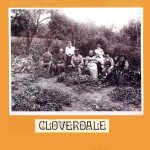 Cloverdale was a distinct, close-knit community mostly in Westford, Vermont, but also including the Putnam Farm in the adjacent town of Cambridge. It lasted for more than 150 years, from 1804 until the 1950s and 1960s when my siblings and I were growing up on the Putnam Farm.
Cloverdale was a distinct, close-knit community mostly in Westford, Vermont, but also including the Putnam Farm in the adjacent town of Cambridge. It lasted for more than 150 years, from 1804 until the 1950s and 1960s when my siblings and I were growing up on the Putnam Farm.
My sister Beth Putnam Cole and I recently gave presentations about the history of Cloverdale to the Cambridge Historical Society and the Westford Historical Society.
Click here for our presentation (5 MB PDF, 60 pages, lots of photos)
Click here for our notes for the presentation (65 KB PDF, 19 pages)
Many thanks to the enthusiastic audiences at both presentations! Both audiences included residents of Cloverdale who added to and corrected some of our comments. Audience input is included in the notes at the preceding link.
Our presentation was based on a book about Cloverdale written in 2001 by our father Harold Putnam and a cousin Jane Clark Brown – Cloverdale: An Anecdotal History of A Rural Neighborhood. Click here for a link to that book.
Thanks to Peter Opstrup of the Cambridge Historical Society for prompting this adventure, and to Caroline Brown of the Westford Historical Society for welcoming our presentation there as well.

Over on Facebook, Patti Lutton wrote: “Thanks, George. Always wondered about Cloverdale. So the question is, “What happened?” I see Cloverdale Road and Cloverdale on Google Maps but never think of it as a town.”
Patti, thanks for your comment. Good question!
Cloverdale was just an informal neighborhood, never a formal town or village. In any event, what happened to it? The answer is that peoples’ lives changed. In earlier times, most people spent most of their time on their own property, or with neighbors that could be easily reached by horse or walking. The main livelihood was farming. Today most people commute to jobs away from home, and don’t spend nearly as much time at home. Some of the many reasons for these changes include the decline of small family farms, the IBM factory in Essex in 1957, and improvements in cars and roads. Also, when people are home, they tend to stay inside more, and don’t get out to visit with neighbors as much, because of modern technologies like television and the Internet.
LikeLike
But we still have neighborhoods and towns…Jeffersonville, Cambridge, Underhill Center, etc… still seem like towns…but that being said, have heard of towns going away as things change. For instance Stevensville was a town that is no longer there.
LikeLike
If the people and institutions go away, I suppose even formal towns and villages can go away (or merge). But formal towns and villages such as the Town of Cambridge, the Village of Cambridge, and the Village of Jeffersonville seem to have more staying power than informal (i.e., unincorporated) neighborhoods and communities. Stevensville, for example, was an informal logging community that went away when the logging went away. Interestingly, Underhill Center is not an incorporated village.
Perhaps a useful local analogy to Cloverdale is Pleasant Valley. Pleasant Valley was never an incorporated town or village. The area we call Pleasant Valley in the towns of Cambridge and Underhill still exists, and lots of people still live there. But the character of the neighborhood has changed greatly from the 19th and early 20th centuries, for the same reasons I mentioned above: the changing nature of employment from family farming to working for an employer somewhere else; improvements in cars and roads; spending more time watching TV and blogging instead of physically visiting one’s neighbors, etc.
These are big issues! All neighborhoods, communities, formally incorporated villages and towns, even countries and civilizations change, evolve, sometimes grow, and sometimes die. Thinking about how that happens is fascinating. Patti, thanks for the discussion!
LikeLike
This evening I attended the Cambridge Historical Society event titled “Vermont’s Musical Ladies” by Linda Radtke, assisted by Arthur Zorn. It was fascinating, and Linda told a story that relates to this discussion of how communities change. I mentioned the effect of television. Linda talked about the effect of an earlier technology – radio.
Linda said that before radio, every farm house had a piano or organ, and family and neighbors would regularly gather to sing songs. It was their entertainment.
One of “Vermont’s Musical Ladies” that Linda talked about was Helen Hartness Flanders (1890-1972). “At the initiative of the Vermont Commission on Country Life, Flanders commenced a three-decade career capturing traditional songs that were sung in New England…The timing of her life work was critical, coming as it did when people were turning away from traditional music in favor of listening to the radio.”
Linda sang two songs that Helen Hartness Flanders collected:
– The Tune the Old Cow Died On
– Young Charlotte, or The Corpse Who Came to the Ball
The quotes above are from the Wikipedia entry for Helen Hartness Flanders:
https://en.wikipedia.org/wiki/Helen_Hartness_Flanders
LikeLike